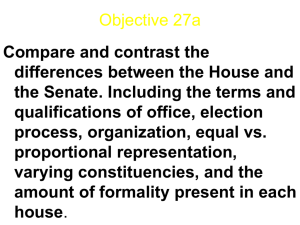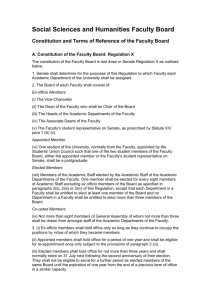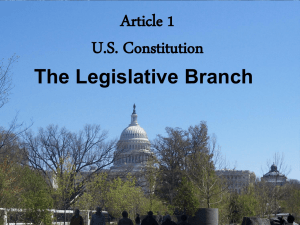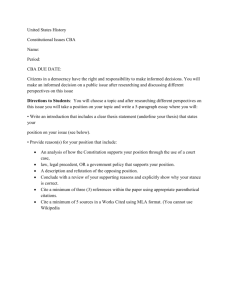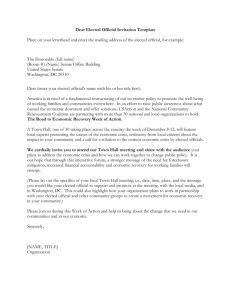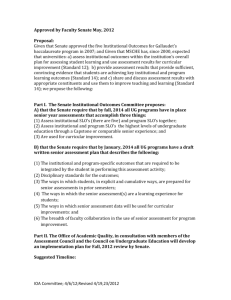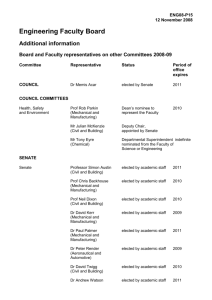MLA Style Guide
advertisement
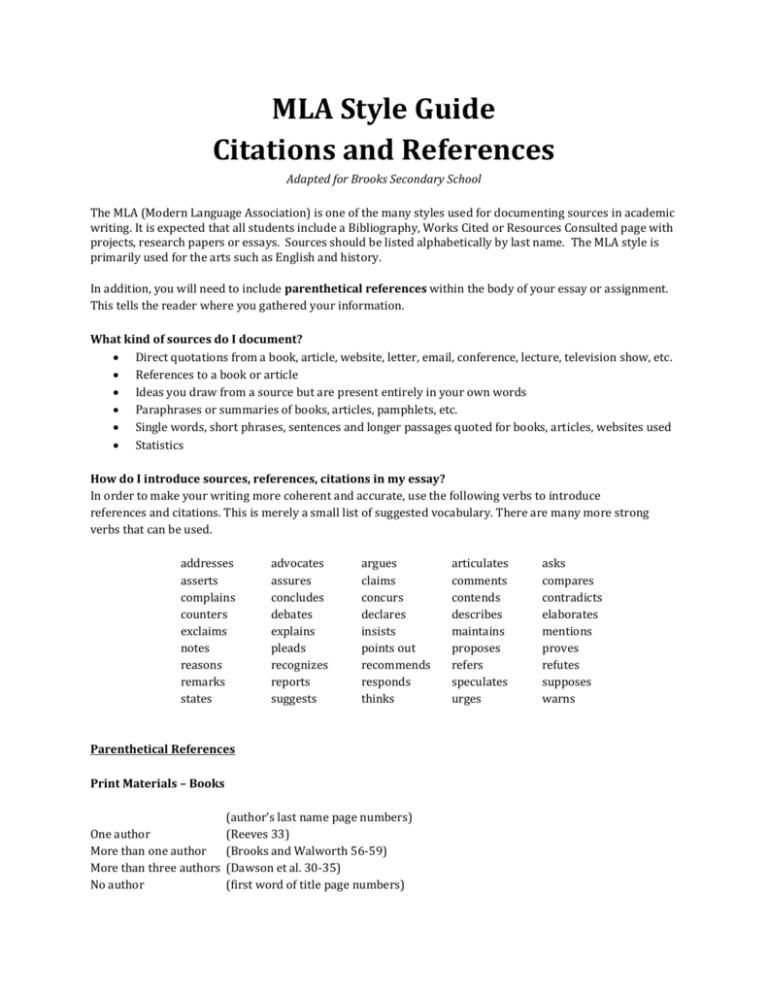
MLA Style Guide Citations and References Adapted for Brooks Secondary School The MLA (Modern Language Association) is one of the many styles used for documenting sources in academic writing. It is expected that all students include a Bibliography, Works Cited or Resources Consulted page with projects, research papers or essays. Sources should be listed alphabetically by last name. The MLA style is primarily used for the arts such as English and history. In addition, you will need to include parenthetical references within the body of your essay or assignment. This tells the reader where you gathered your information. What kind of sources do I document? Direct quotations from a book, article, website, letter, email, conference, lecture, television show, etc. References to a book or article Ideas you draw from a source but are present entirely in your own words Paraphrases or summaries of books, articles, pamphlets, etc. Single words, short phrases, sentences and longer passages quoted for books, articles, websites used Statistics How do I introduce sources, references, citations in my essay? In order to make your writing more coherent and accurate, use the following verbs to introduce references and citations. This is merely a small list of suggested vocabulary. There are many more strong verbs that can be used. addresses asserts complains counters exclaims notes reasons remarks states advocates assures concludes debates explains pleads recognizes reports suggests argues claims concurs declares insists points out recommends responds thinks Parenthetical References Print Materials – Books (author’s last name page numbers) One author (Reeves 33) More than one author (Brooks and Walworth 56-59) More than three authors (Dawson et al. 30-35) No author (first word of title page numbers) articulates comments contends describes maintains proposes refers speculates urges asks compares contradicts elaborates mentions proves refutes supposes warns Online Journal, Magazine, Newspaper Articles (author’s last name page numbers if available) Electronic Book Article (author’s last name page if available) Example #1 Canada’s appointed executive body of the Senate is a contentious issue each election period. Many citizen groups lobby the government for a more representative form of government and campaign for an elected Senate. Yet elected governments often find various reasons to maintain the status quo. A government finds senatorships most useful as rewards for duty faithfully performed, as influences to produce immediate activity in the hope of recognition on the future, as inducements to persuade members of the Commons to resign and vacate a seat for new or defeated Cabinet Ministers, as aids for keeping restless provinces or provincial governments in line, and as a convenient scrap-heap on which to cast Ministers who have outlived their usefulness or who have become for one reason or another trying colleagues to retain in the Cabinet. (Dawson 68) Example #2 Canada’s appointed executive body of the Senate is a contentious issue each election period. As Canada grows older and more experienced in governing more and more leaders are looking at a more expansive representative governing body which would include an elected Senate. Dawson points out that political parties campaigning on Senate reform often change their minds once they “gain office and acquire the power of appointing senators” (68). *no need to include the author as he is already mentioned within the text
